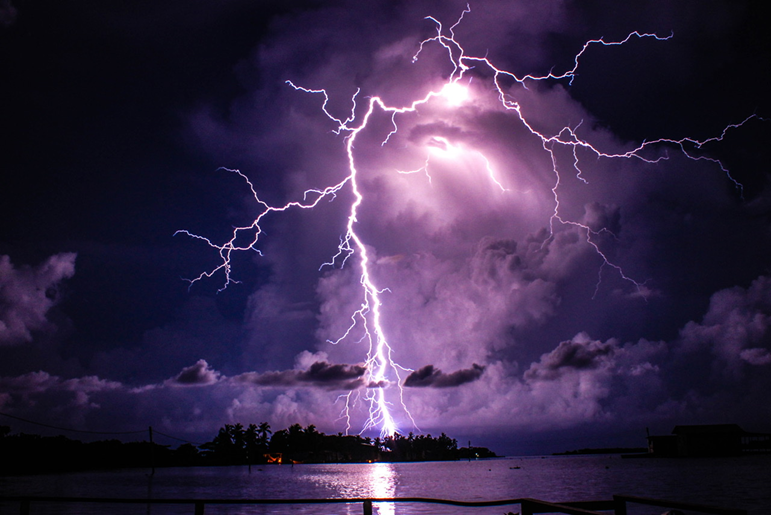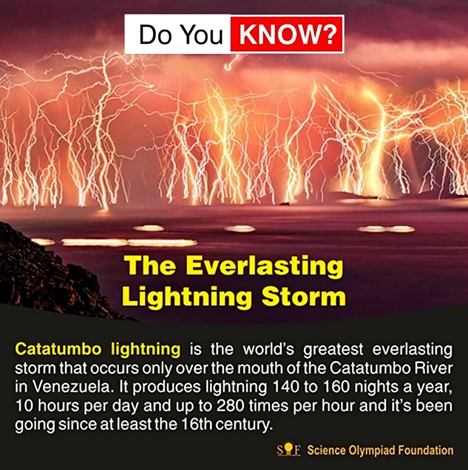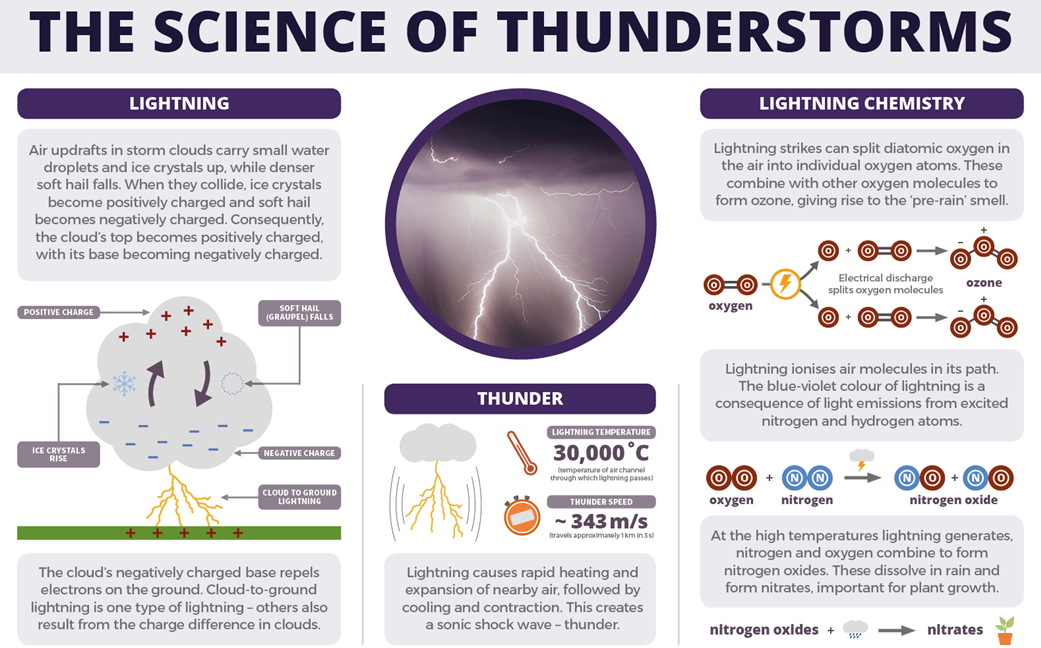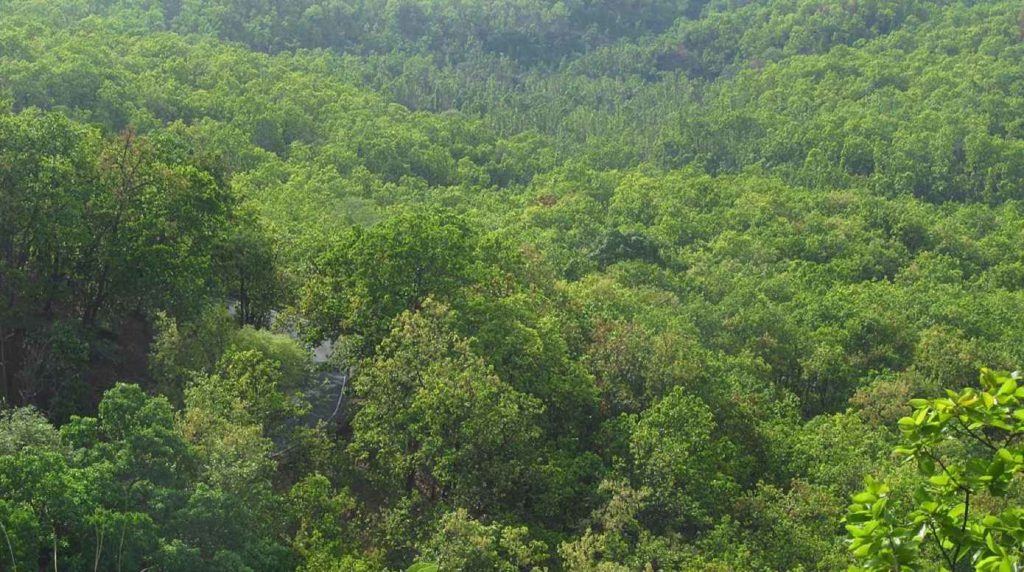- Courses
- GS Full Course 1 Year
- GS Full Course 2 Year
- GS Full Course 3 Year
- GS Full Course Till Selection
- Answer Alpha: Mains 2025 Mentorship
- MEP (Mains Enrichment Programme) Data, Facts
- Essay Target – 150+ Marks
- Online Program
- GS Recorded Course
- Polity
- Geography
- Economy
- Ancient, Medieval and Art & Culture AMAC
- Modern India, Post Independence & World History
- Environment
- Governance
- Science & Technology
- International Relations and Internal Security
- Disaster Management
- Ethics
- NCERT Current Affairs
- Indian Society and Social Issue
- NCERT- Science and Technology
- NCERT - Geography
- NCERT - Ancient History
- NCERT- World History
- NCERT Modern History
- CSAT
- 5 LAYERED ARJUNA Mentorship
- Public Administration Optional
- ABOUT US
- OUR TOPPERS
- TEST SERIES
- FREE STUDY MATERIAL
- VIDEOS
- CONTACT US
Catatumbo Lightning
Catatumbo Lightning
10-05-2024

Catatumbo lightning is a natural phenomenon that occurs over the Catatumbo River in Venezuela. This phenomenon occurs primarily at the river's mouth, where it meets Lake Maracaibo, Venezuela's largest lake.
Catatumbo Lightning: Several factors converge to generate the unique conditions necessary for Catatumbo lightning.:
-
How does Catatumbo Lightning Occur?

-
- Warm, moist air from the Caribbean Sea is pushed towards the Andes Mountains. There, it collides with cooler air descending from the peaks, creating a perfect storm.
- The shape of the local landscape forces the warmer air to rise rapidly, causing it to cool and condense into towering cumulonimbus clouds.
- Strong winds and temperature differentials generate electrical charges within these clouds.
- The cumulonimbus clouds, reaching heights above 5 kilometers, load up on static electricity.
- When the electrical potential within clouds becomes too high, it dissipates in the form of lightning.
-
Frequency and Duration of Catatumbo Lightning
- Catatumbo lightning is distinctive for its frequency and duration. Lightning strikes on up to 160 nights per year, with an average of 28 lightning strikes per minute at its peak.
- This constant flow of current has earned the region the title of "Electricity Capital of the World".
-
Key Facts about Lake Maracaibo
- Lake Maracaibo is located in Venezuela and is the largest lake in Latin America.
- It is also among the oldest water bodies on the planet.
- The lake's proximity to the Andes Mountains and the Caribbean Sea creates a unique geographical setup, contributing to the frequency of lightning in the region.
What are Thunderstorm?

- A thunderstorm, often referred to as an electrical storm or lightning storm, is a meteorological phenomenon marked by lightning and its accompanying sound, thunder.
Key Features and Characteristics of Thunderstorms:
- Formation:
- Thunderstorms form when warm, moist air rises rapidly in an unstable atmosphere.
- Various factors, such as daytime heating, frontal boundaries, orographic lifting, and air mass convergence, can trigger this upward air movement.
- Cumulonimbus Clouds:
- Thunderstorms are associated with cumulonimbus clouds, tall, dense clouds capable of reaching over 20 kilometers high.
- These clouds form through the rapid upward convection of warm air, leading to condensation and cloud formation.
- Lightning and Thunder:
- Lightning is an electrical discharge that occurs within a thunderstorm due to the buildup and release of electrical charge within the clouds or between the clouds and the ground.
- Thunder is the sound produced by the rapid expansion of air heated by the lightning discharge.
- Rainfall:
- Thunderstorms often produce heavy rainfall, which can lead to localized flooding.
- The intensity and duration of precipitation vary depending on the strength and duration of the thunderstorm.
- Surface Winds:
- Thunderstorms can generate strong winds, especially near the downdraft region of the storm.
- These winds can be gusty and may cause damage, particularly in severe thunderstorms.
- Hail:
- In intense thunderstorms, hailstones may form when strong updrafts carry raindrops upward into extremely cold regions of the cloud where they freeze and accumulate layers of ice before falling to the ground.
- Severe Thunderstorms:
- Some thunderstorms become severe, exhibiting intense characteristics such as large hail, damaging winds often exceeding 50 knots or 93 km/h, and tornadoes.
- These severe storms pose significant risks to life and property.
Must Check: Best IAS Coaching In Delhi



